GPM's 1/72 scale
Civil Hangar
by Roland Sachsenhofer

In my search for suitable backgrounds for the photos of my aircraft models, I came across two ways of placing the models in an attractive, yet not too distracting and still associative setting: firstly, these are photographed images on flat picture carriers which, placed at an appropriate distance behind the model and photographed with the horizon line kept decidedly low, can build up a convincing scenery. The second approach is to build a three-dimensional backdrop: the GPM hangar presented here is my first attempt in this direction.
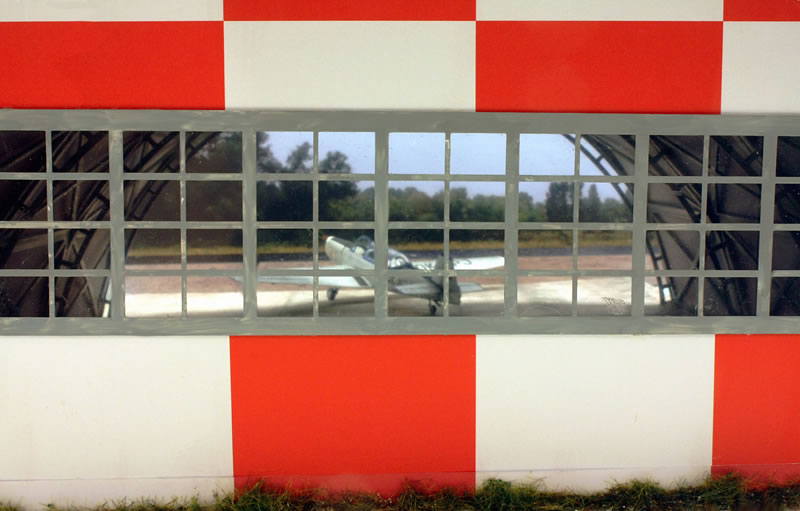
Three qualities appealed to me about this building from the very first moment. Firstly, the hangar is so generic in its appearance that a fictional original could be encountered over wide geographical as well as temporal spaces. This simple vaulted room could stand in both East and West and, I'm just guessing, it could have been seen in the late 1920s just as it would still cut a fine figure on sports airfields today. The same applies to the "military" brother of the civil building shown here: GPM also offers the same model with an outer shell in camouflage.
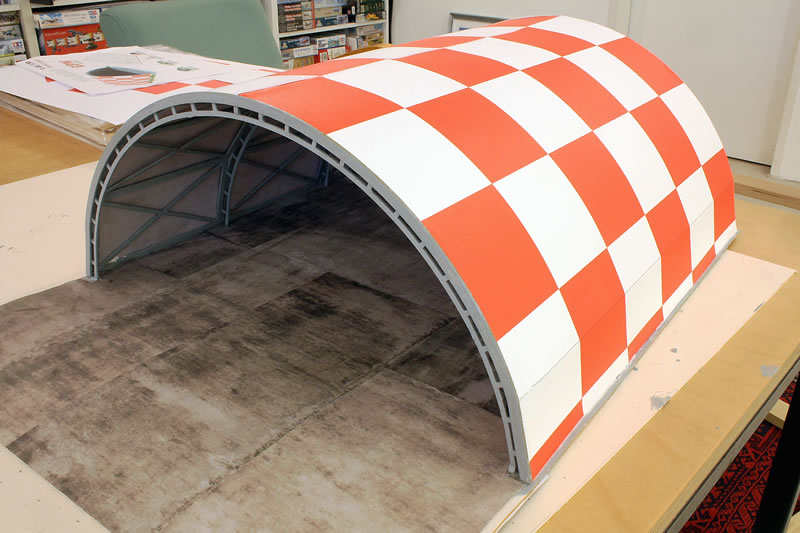
Secondly, I like the lighting scenes in the voluminous interior. On the one hand, the vaulted room is shady and dark, so that beautiful light changes on aircraft halfway inside the building are possible, on the other hand, the interior can be illuminated through a window positioned on the back wall. How this light appears is up to you: either the silhouette of the aircraft is emphasised by backlighting, or you use the light filtered through the window frame to create an atmospheric chiaroscuro on the surfaces of the aircraft and the ground. This effect can be seen quite well in the two videos I made of GPM's hangar model, in which I enter and walk around the building with a small camera, so to speak.
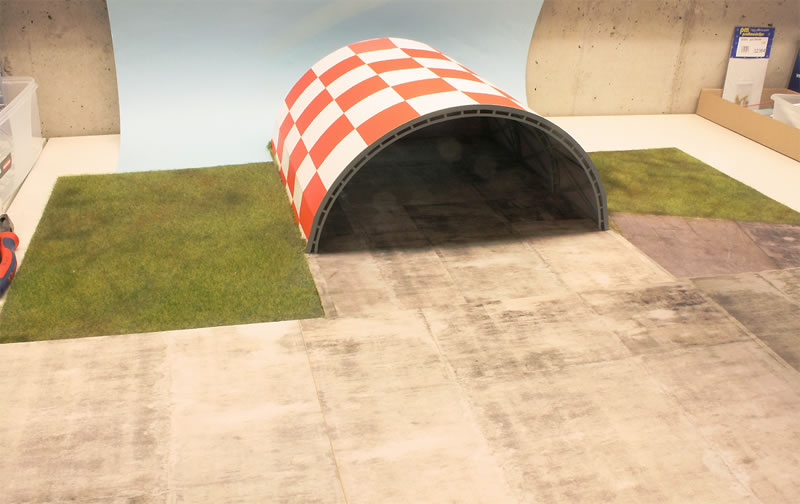
Thirdly, I appreciate the unspectacular simplicity of the building model as an essential ingredient for a successful model staging, because the main thing should be the photographed aircraft! The simple hangar shape chosen by GPM ensures that the real eye-catcher remains the aircraft, while the associative background of the building enhances it in its effect.
I can say in advance that this is my first cardboard model; this means that an experienced model builder can probably achieve a nice result even faster than I did.
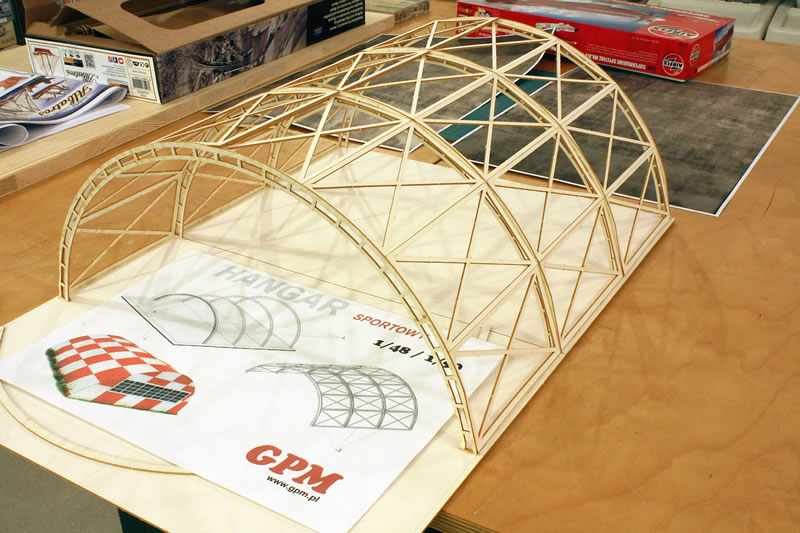
GPM provides the kit with all the cardboard parts needed to build the hangar and to create the outer skin with the red and white chequerboard pattern.
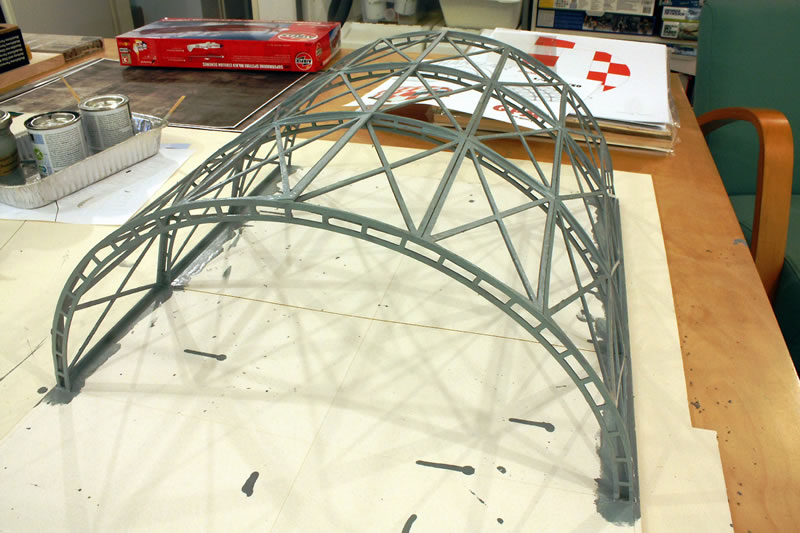
What the modeller has to contribute himself, however, are the surfaces of the floor and those of the inside of the roof vault. I decided to cover the floor with printouts of scanned apron concrete slabs, the inside of the roof was also covered with a layer of printed paper: here the motif of the concrete slabs was processed on the PC and lightened to offer the eye a little structure in grey values.
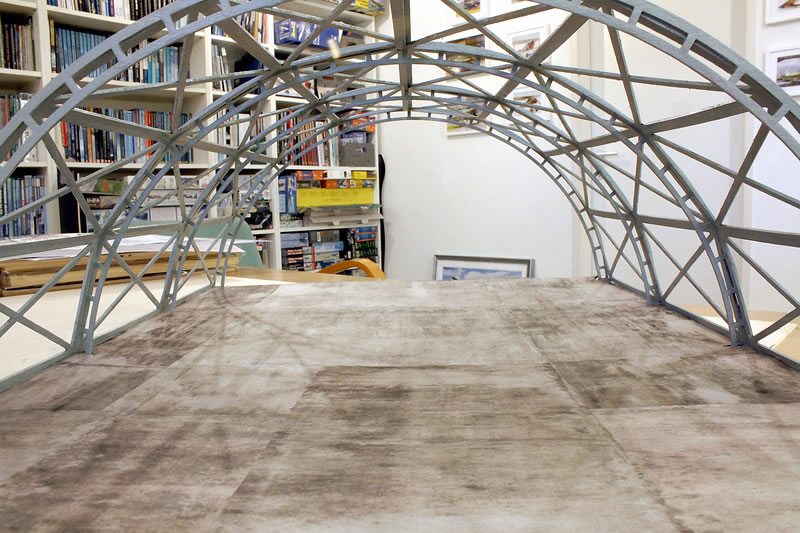
The cardboard parts were mostly joined with glue or, where a quick adhesive effect was necessary, with cyanoacrylate.

After initial trials with paper glue - which requires counter-gluing on the reverse side to prevent warping of the cardboard surfaces - the paper of the floor was finally laminated quickly, easily and successfully with standard glue.

In the course of the hangar project, I used printouts of variants of the concrete slab motif to glue on a number of other A3-format cardboard surfaces; these can now be grouped around the hangar in combination with other terrain imitations in such a way that variable contiguous surfaces and thus interesting photographic perspectives are created.
Inspired by the positive experiences with this construction, I have now built this model twice more in a smaller scale. I am also in the process of building GPM's second version of a hangar building, a much larger and more complex building, in 1:48 and 1:72. Having said this, is it surprising if I come to a thoroughly positive conclusion? I recommend these simple and straightforward cardboard kits to anyone who is interested, and I hope you will enjoy the results, whether they are used as diorama props or photo backgrounds!
If you would like to see the kit and the building process for yourself, you can find a detailed building report on "Scalemates" here:
Hangar Sport (1:48) by Roland - Albums (scalemates.com)
The video presentations of this hangar mentioned in the text can be found with the following links:
https://youtu.be/M8qSR0QSkvk
https://youtu.be/eb6iXQFPUS0
As always, I am open to suggestions and questions:
ro.sachsenhofer@gmx.at
Model, Images and Text Copyright ©
2023 by Roland Sachsenhofer
Page Created 22 May, 2023
Last Updated
22 May, 2023
Back to HyperScale Main Page

|
Home
| What's New | Features | Gallery | Reviews | Reference | Resource Guides | Forum |